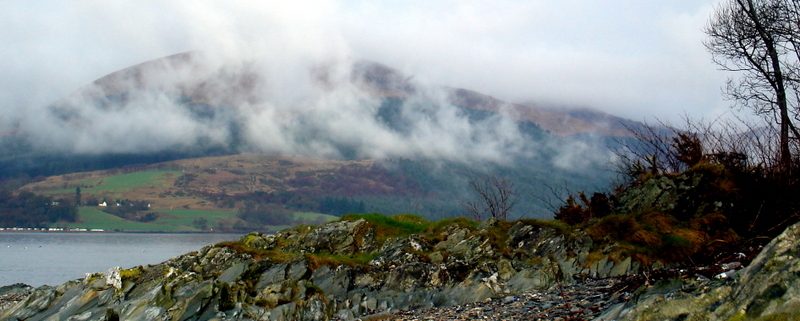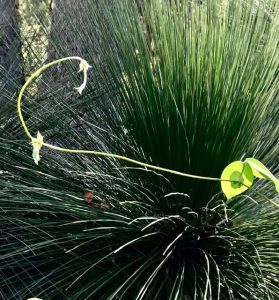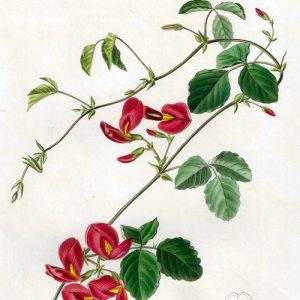Georgiana Molloy and environmental conservation
‘ …but the scenery, who can describe. I have it in my mind & there it will always rest’
Loch Long, Scotland
The first signs of Spring are appearing in the bush, which means many of the native wildflowers of southwest WA are beginning to put on new growth. There’s a vibrant glow of new leaves everywhere I look, in almost every shade of green, and many of the plants Georgiana Molloy gathered for her botanical collections are already in flower. One of her personal favourites, the Augusta kennedia (Kennedia lateritia) rests quietly and unassumingly through Winter but already its long, twining stems are unfurling, stretching themselves around whatever’s nearby to provide support for the brick red flowers that will appear in a few weeks.
Kennedia lateritia
There are several in my own garden and they self-seed like crazy which is all good as they’re native to this region but mine came from a local plant nursery and the Kennedia lateritia that grows naturally in the wild is only found in a five kilometre radius of Augusta. It’s a precious local beauty and its survival is at risk. The main threats don’t come as a surprise. The plants get trampled by unsuspecting tourists, burned as a result of inappropriate fire practices and choked by weed invasion but one of the biggest threats to these and many other native plants is land clearing for development.
When the first European settlers in Augusta cleared land to create their homesteads, conservation of the local environment wasn’t a concern that guided their actions and we know they and others who followed them planted invasive, non-native species as crops and in gardens, that are still causing problems today. On her parents’ property as a child in Cumberland in the UK, Georgiana was surrounded by an abundance of space, with fields and paddocks surrounding the house and beyond them the open wilderness of the moors that edged the borders between England and Scotland. Her father planted hundreds of trees on the Crosby estate, not all of them native to Britain. Gardening magazines of the time were filled with descriptions of the desirability of plants from other countries. Even so, it didn’t surprise me to find evidence that Georgiana was already aware of the dangers of thoughtless land clearing, aware of the value of pristine natural landscapes and concerned about the loss of fragile environments.
Her strong feelings about natural environments reverberate in her writing about the places she loved not just in the words she used to describe places of great beauty but also in the distaste she reveals for the spoiled places, landscapes adversely affected by human intervention and thoughtlessness.
This is true of her writing about Cumberland, Scotland and Western Australia. I’ve written before about the particularly resonant language used in her 1828 journal which includes a voyage with friends around the Western Isles of Scotland.[i] It’s an area still recognised for its breathtaking, outstanding natural beauty and I’ve returned each time from my own travels there with no record on paper. In the face of such overwhelming scenery, words failed me every time. The journal also gives us a one very clear insight into Georgiana’s views about protecting wild places from the sweeping hand of development.
Her language in this extract is only lightly restrained and it simmers with all the vehemence of an environmentalist.
Sunday July 6th.
Mr. Hutcheson & I went up to the Shawes, which are largeWaterworks on Sir Michael S. Stewart’s property immediately above the west end of Greenock for the purpose of erecting Cotton Mills, (what Goths & sordid beings men are!) on that beautiful hill. I saw General Darroch’s property and from a desire to be on it unknown to the proprietor persuaded Mr Hutcheson to accompany me. We passed several slips into which the water is conveyed from a reservoir 8 miles distant, being Sunday the water was not an inch in depth. The Engineer was Mr. John and the Works cost about £30000 They are worth seeing. I wish the ground that is to be destined for such a purpose belonged to me and I would save it from such profanation.
[i] Pp 66-72 in the Picador edition of ‘Georgiana Molloy, the Mind That Shines’
IMAGES
Loch Long, Scotland, from my album
Augusta kennedia tendril in my garden today
Kennedia lateritia, from a botanical publication 1838 in my collection






